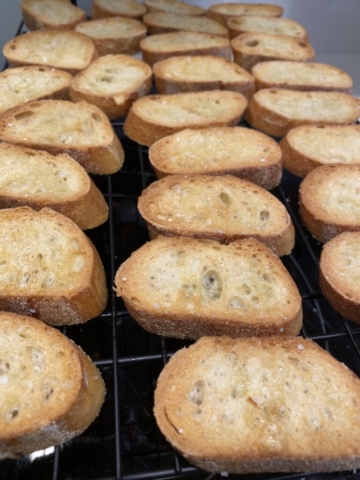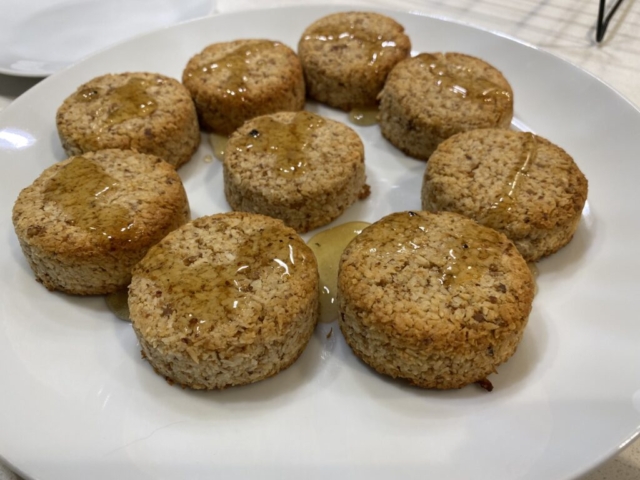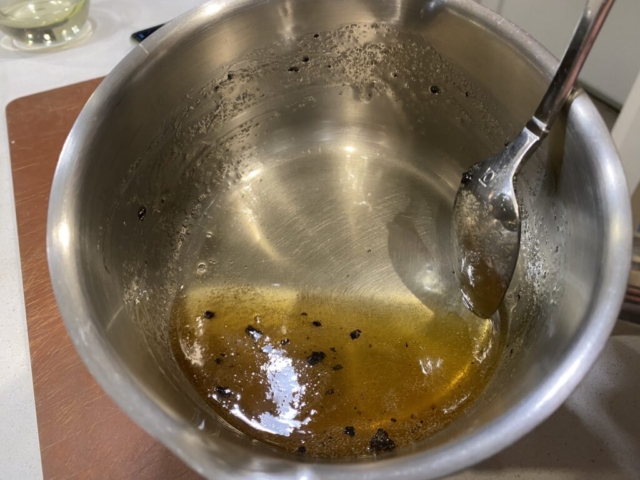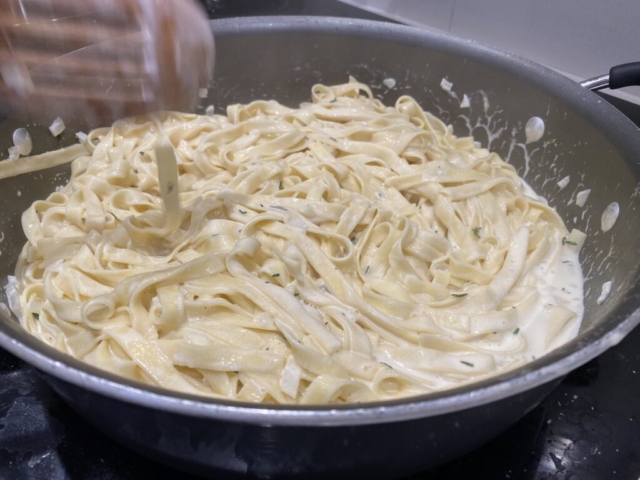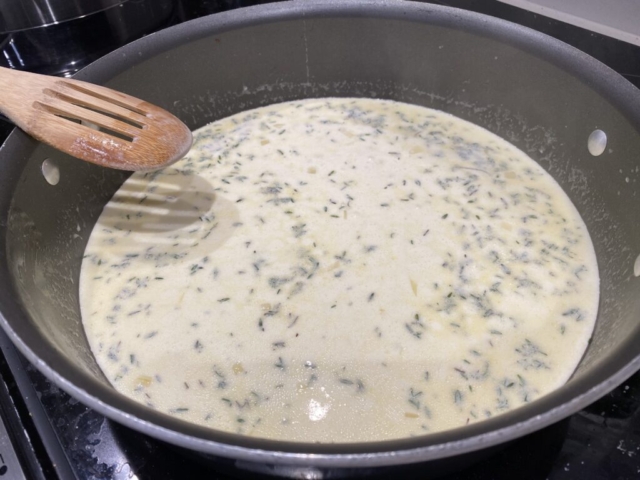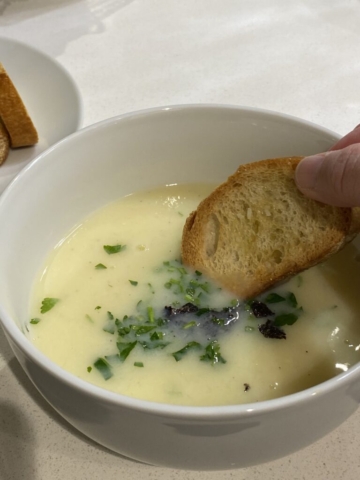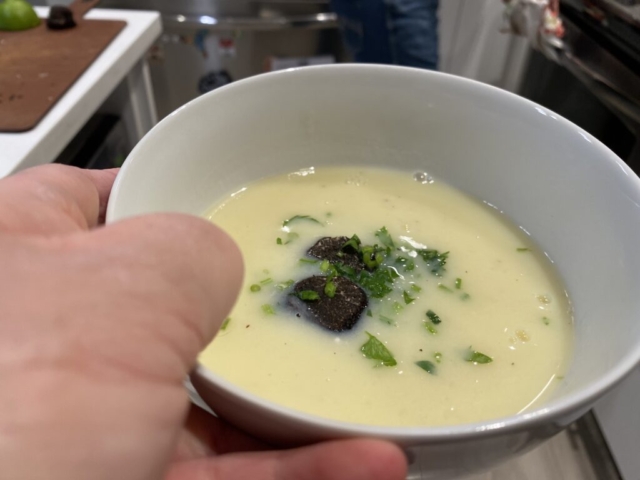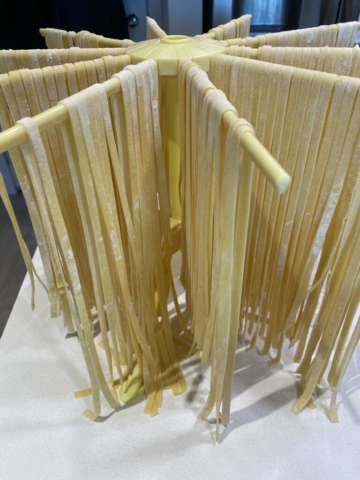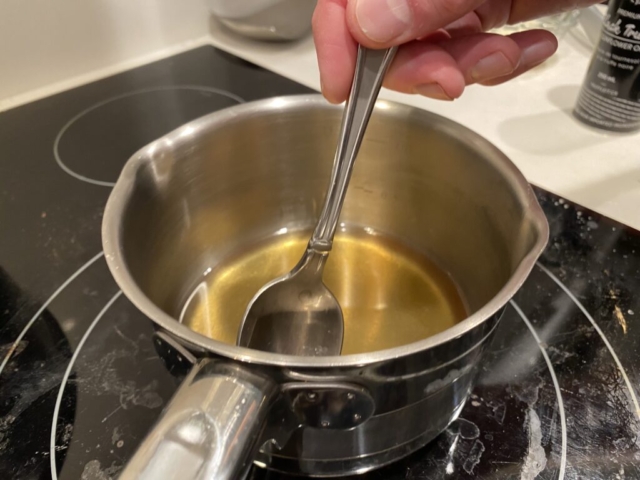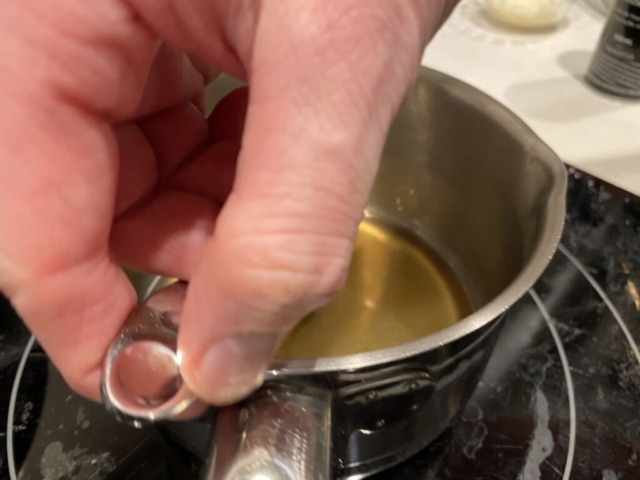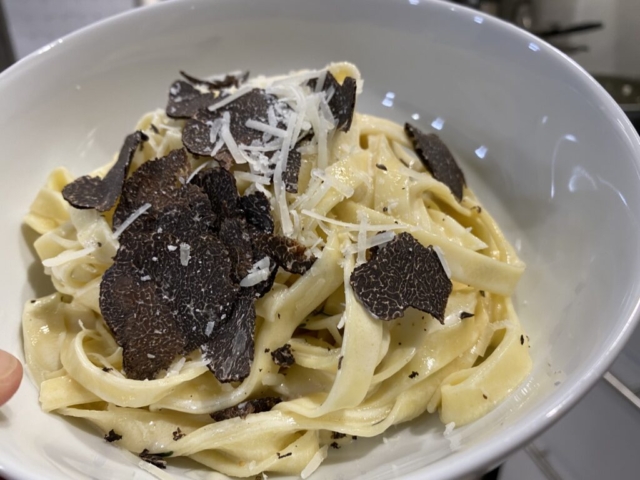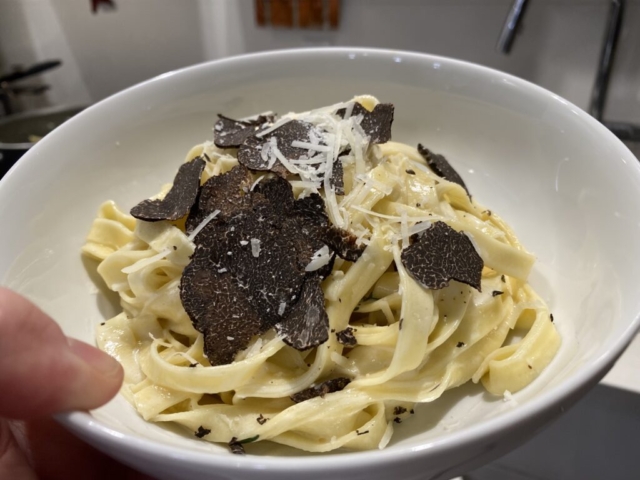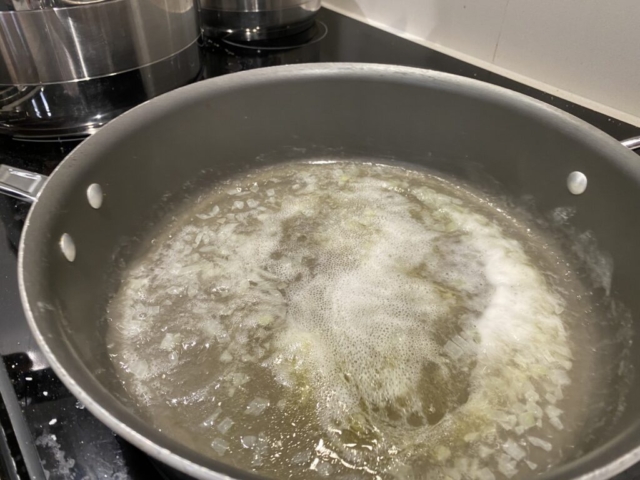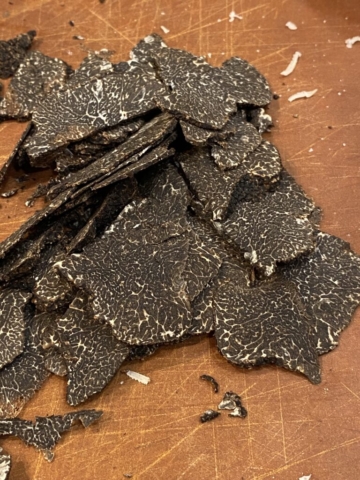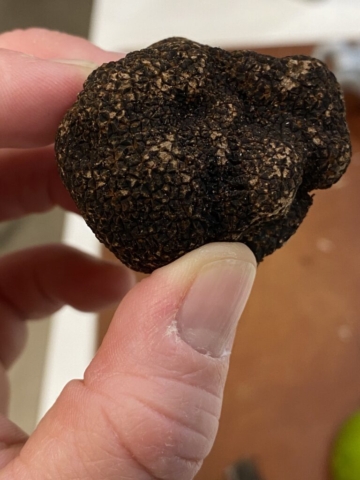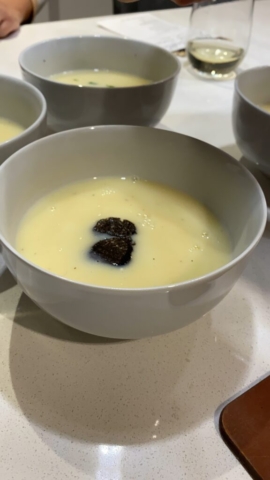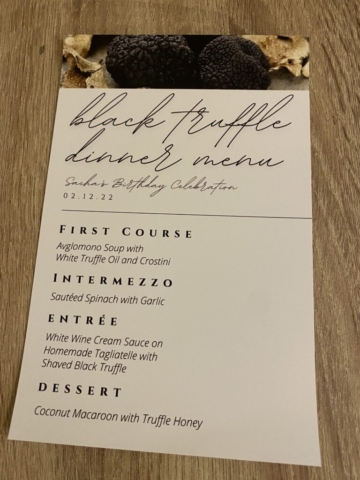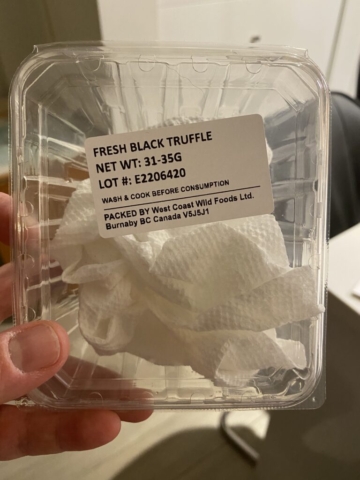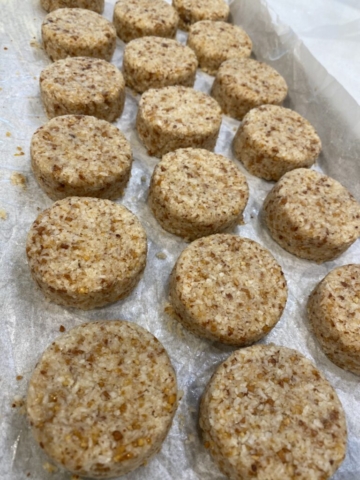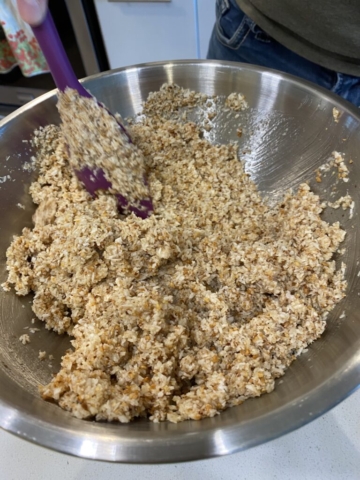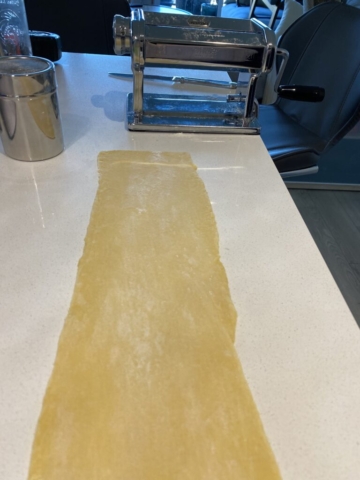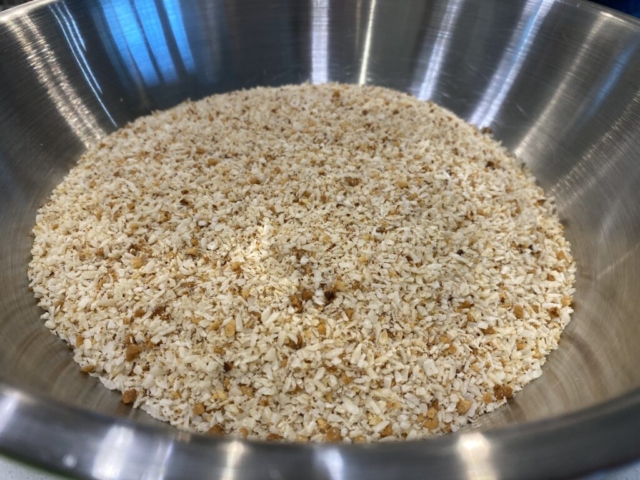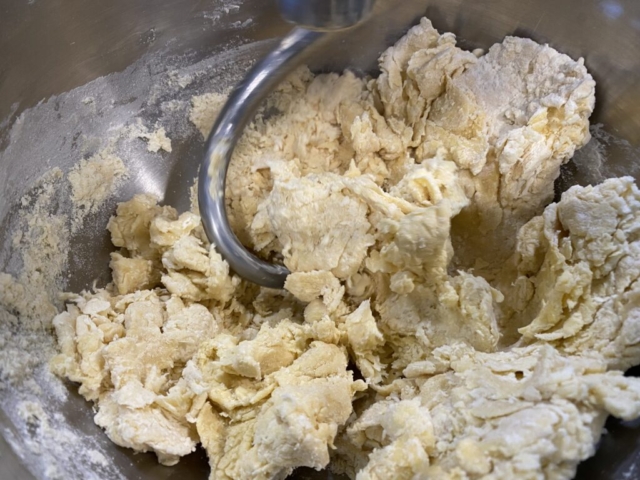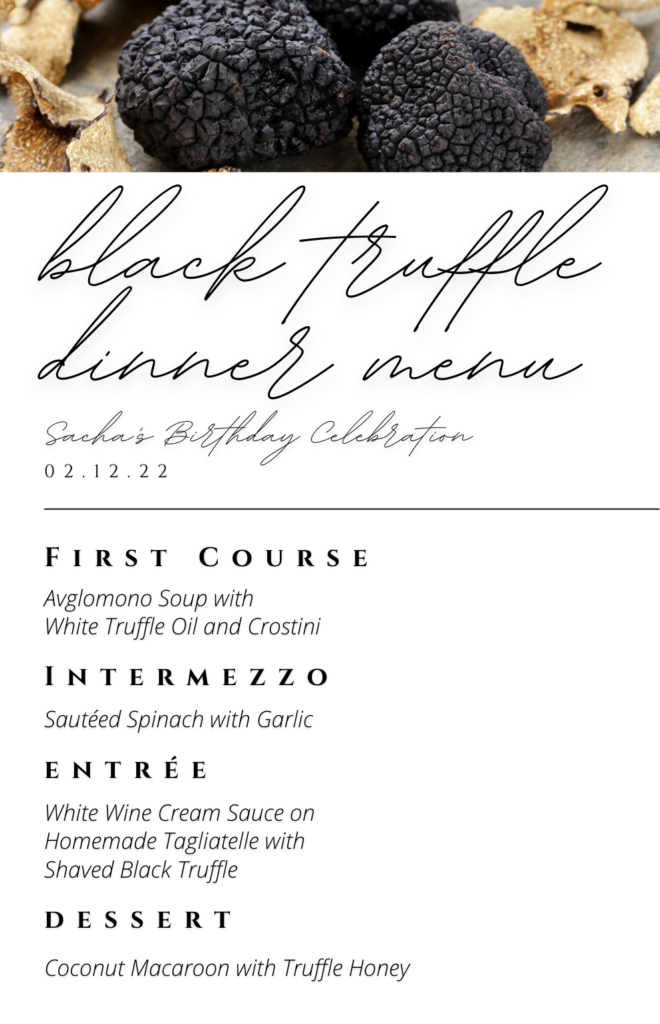
It began with an idea to give my sister a cooking class experience for her birthday present. Having done several courses Chef Robin Kort Robin Kort – Chef/Sommelier/Forager/Owner at Swallowtail culinary adventures I started the search there as I their classes unite “passions; cooking, drinking, foraging, friends and the great outdoors”. Voila – we found a class that piqued our interest.
Something new.
Something different.
Something pungent.
TRUFFLES!
This truffle cooking class was available virtually through a video series by Chef Robin. Though the original intention was to do a class as my sister’s birthday experience, we transitioned to gifting her a special truffle birthday meal. 3 courses, each recipe from Chef Robin, that plays to the flavours and highlights of the truffle mushroom. And, if you’re familiar with the truffle market, then you know fresh truffles cost $$$. That unique and sensory experience of a full truffle meal would be a delight for us all.
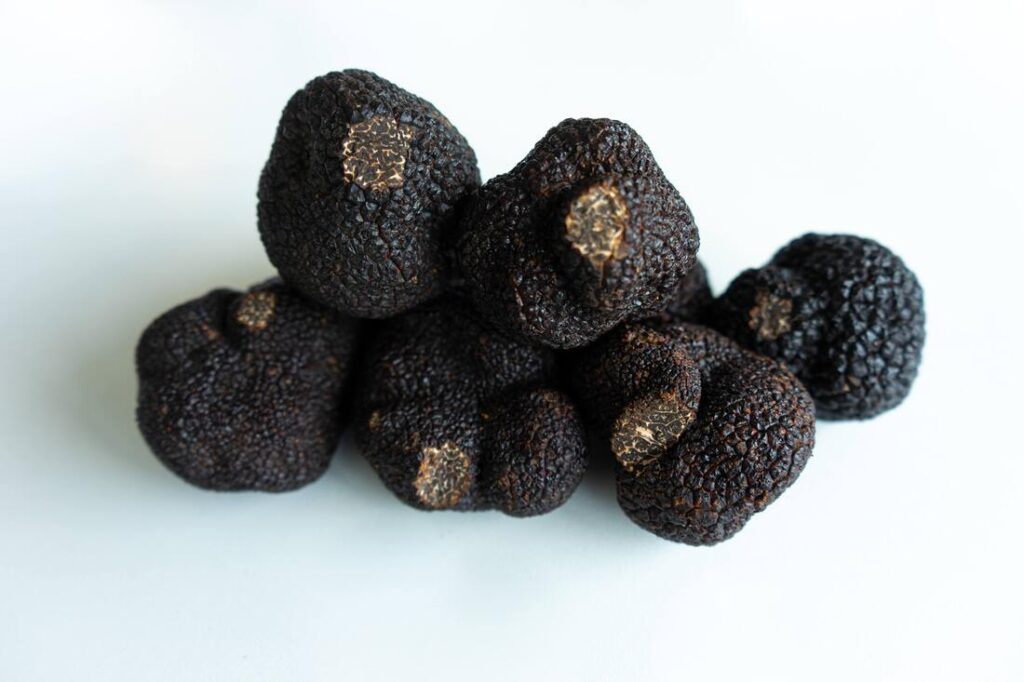
What is a truffle?
A truffle is the fruiting body of a subterranean ascomycete fungus, predominantly one of the many species of the genus Tuber.
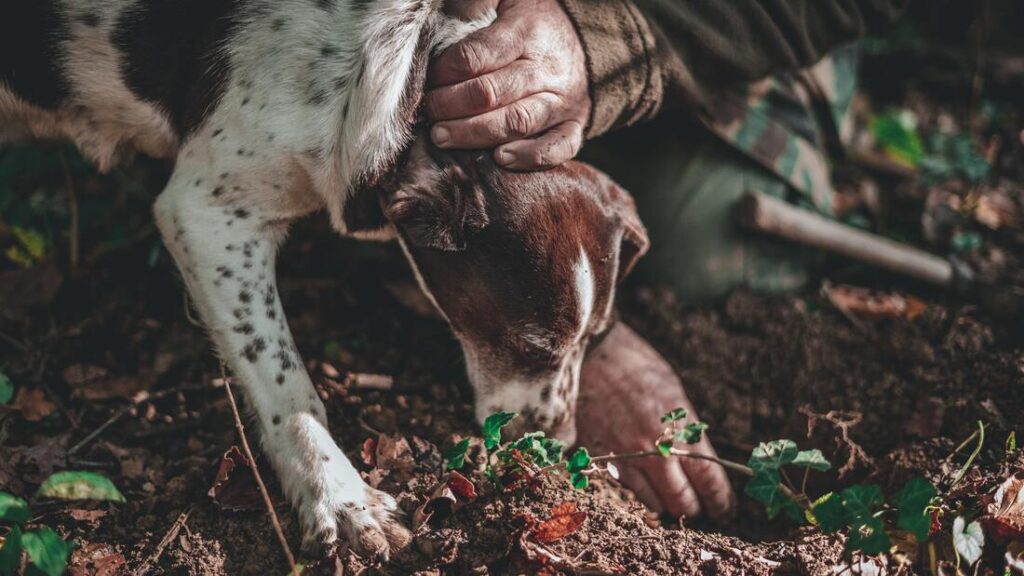
Animals and truffles have an interesting shared history of co-evolution. As the truffle fruits underground, it has evolved to have a strong aroma and delicious taste that entices animals to dig them up, therefore dispersing their spores through ingestion and then poop!
Truffles grow in very particular conditions. The locations in which they thrive are limited and they are quick to spoil, and they are incredibly difficult to grow as well as hunt. For all these reasons, truffles are pricey.
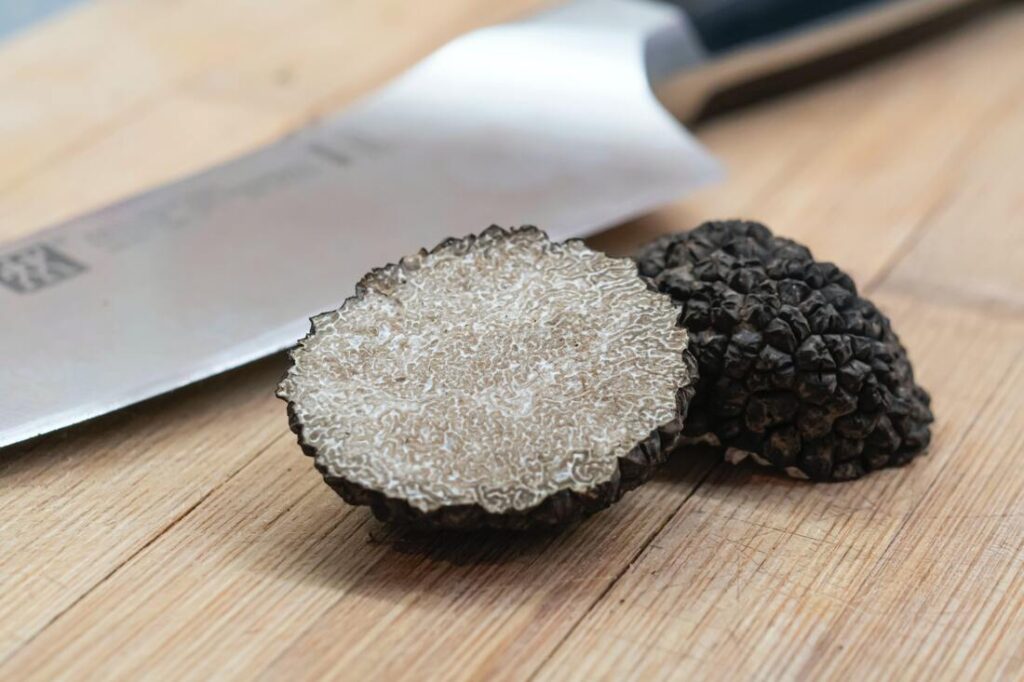
Two types of truffles:
White – hunted September – December
- Way more intense aroma
- Don’t cook/apply heat – they are very delicate
- Served atop a dish by grating
Black (winter) – hunted December – February
- Can slightly cook, so they do well folded into warm dishes (which is what we did with these recipes)
What do they taste like?
It’s complicated. Nutty, earth, oaky, yet entirely unique as it’s own flavour profile.
So how do we find truffles?
Humans need a little help for this…
As the fruiting body of the fungi is underground, these delicious and pungent specimens cannot be seen. Instead humans use dogs and pigs to hunt truffles that are under the soil. I learned the word to describe truffles growing underground: hypogeous As I don’t have a truffle pig nor truffle dog, we sourced the truffles from West Coast Wild Foods, which is local to us (Burnaby). 31-35g of Fresh Italian Black Winter Truffle came to about $120 (including shipping & tax).The truffle came wrapped in paper towel in a plastic box. The container helps stop the truffle from oxidizing/spoiling and containing aroma while the paper towel helps it stay dry.
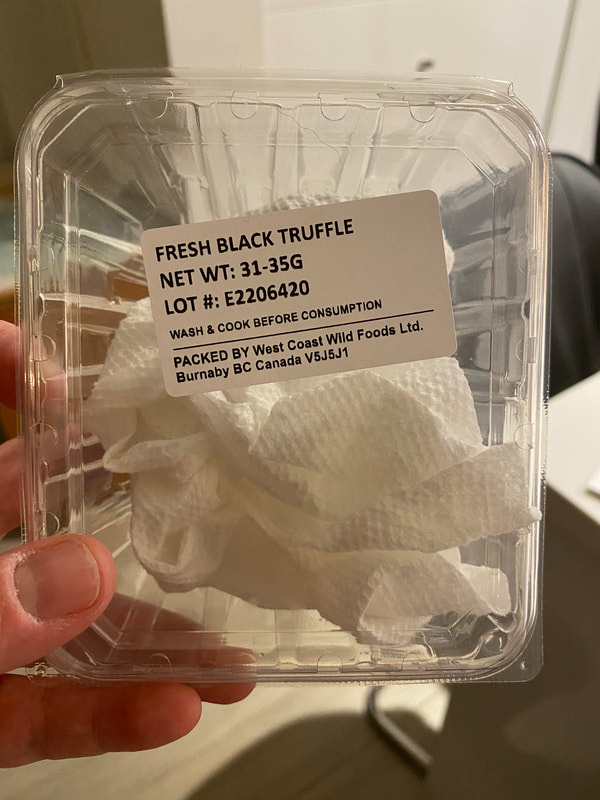
Recommendations from Chef Robin
- Chef Robin shared that wholesalers like are Ponderosa mushrooms and Mikuni wild harvest might have product to sell.
- Gourmet warehouse has a good selection of both black and white truffle products. Order a small container of the black truffle puree and the white truffle oil
- South China Seas on Granville Island can usually pre-order fresh truffles
How do we prep the truffles?
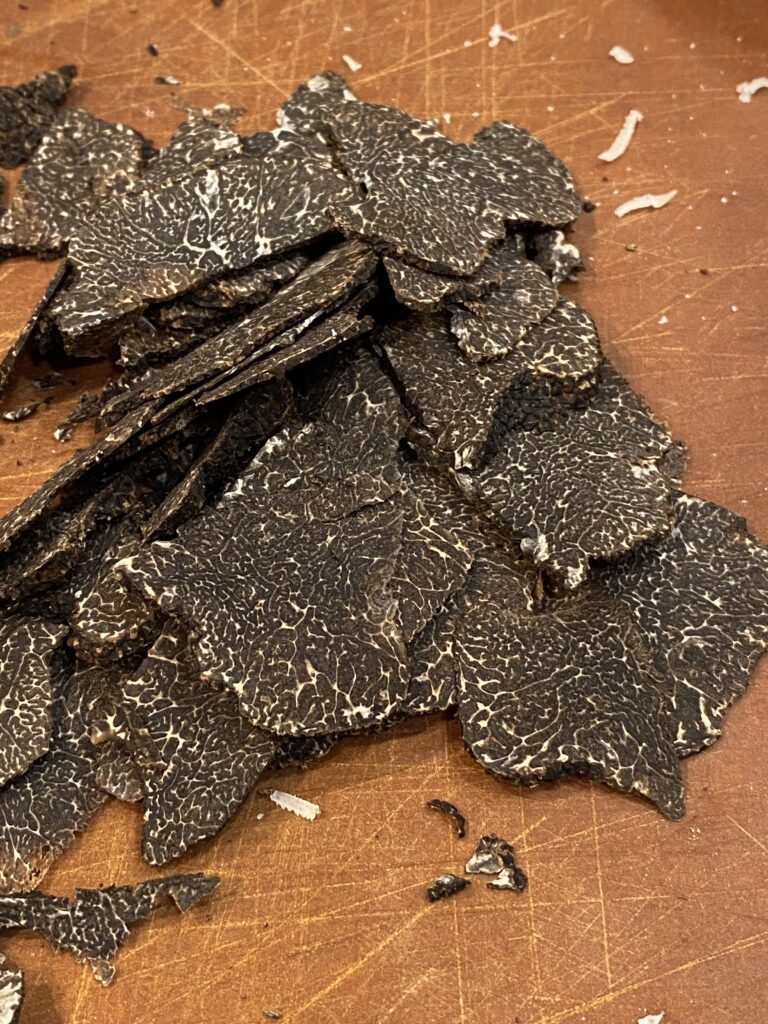
- We learned that with fresh truffles it’s better to use slice as thinly as possible, otherwise it’s chalky (we learned the hard way after the slices for the soup we made with the cheese slicer were too thick).
- We might have used a mandolin, but Chef Robin said that even that can be too thick. A microplane grater is also an option, but it creates quite fine pieces, so you lose some of the texture.
- We ended up slicing the truffle very thinly with our best chef’s knife and it worked gloriously on the pasta.
What did I learn in this cooking experience?
- Fresh truffle is delicious!
- The mycelia of truffles form symbiotic, mycorrhizal relationships with the roots of several tree species including beech, birch, hazel, hornbeam, oak, pine, Douglas fir and poplar.
- Mutualistic ectomycorrhizal fungi such as truffles provide valuable nutrients to plants in exchange for carbohydrates.
- When hunting for mushrooms be careful not to unduely disturb the forest floor as the mycelium which is the vegetative/root like part of a fungus is best left undisturbed so that it can fruit new mushrooms each season.
- When cooking with truffles, ensure you don’t have too many competing flavours. Remember how pricey these nuggets are! Make sure that they are the primary flavour note, don’t hide them in spice or herbs.
- If using truffle oil, buy smaller more experience bottles – a little goes a long way and don’t sacrifice quality. Don’t be fooled by products that have “truffle aroma”, “essence”, etc. Don’t buy if it lists just olive oil as the only ingredient.
- Italian Alba truffles have the strongest aroma, whereas black truffles are generally more mild and have a totally different aroma (chocolate, earthiness, savoury). Fresh/BC perigords (black truffles) are comparable in aroma when fresh.
- It’s key to get fresh truffles either just shipped or freshly picked locally as they lose their aroma the longer they sit.
- Truffles bind to fat, so the creamy dishes that Chef Robin taught work really well.
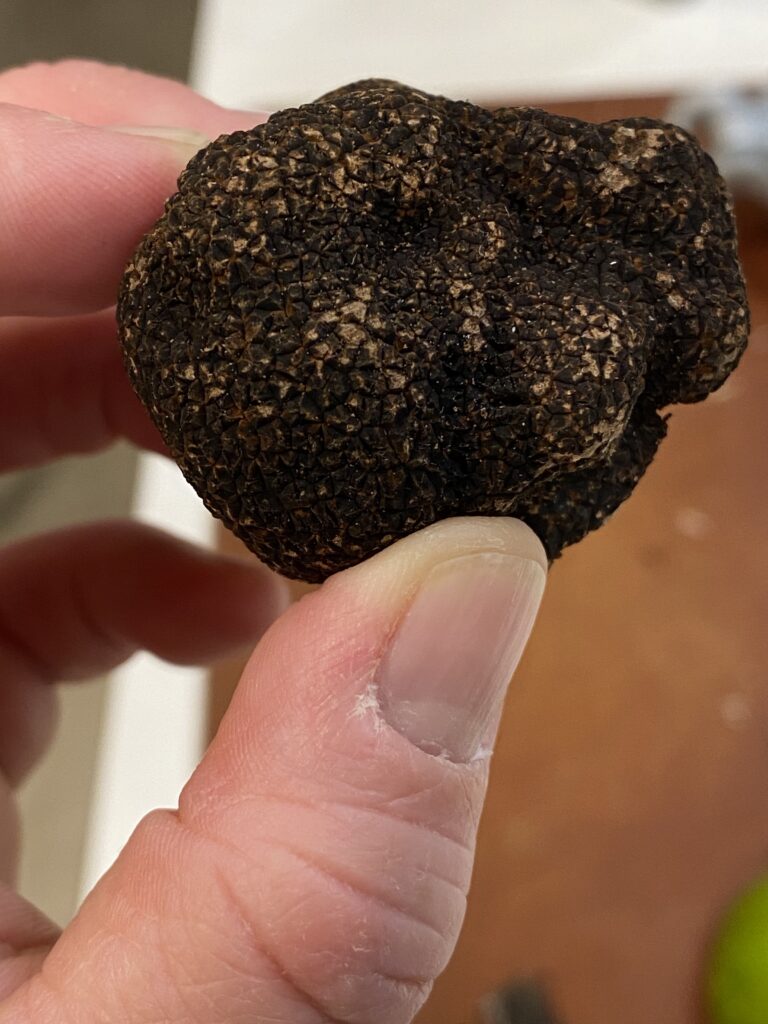
What about the dinner!??!?!
oops. Yes. The birthday dinner that set this whole thing in motion.
The Menu
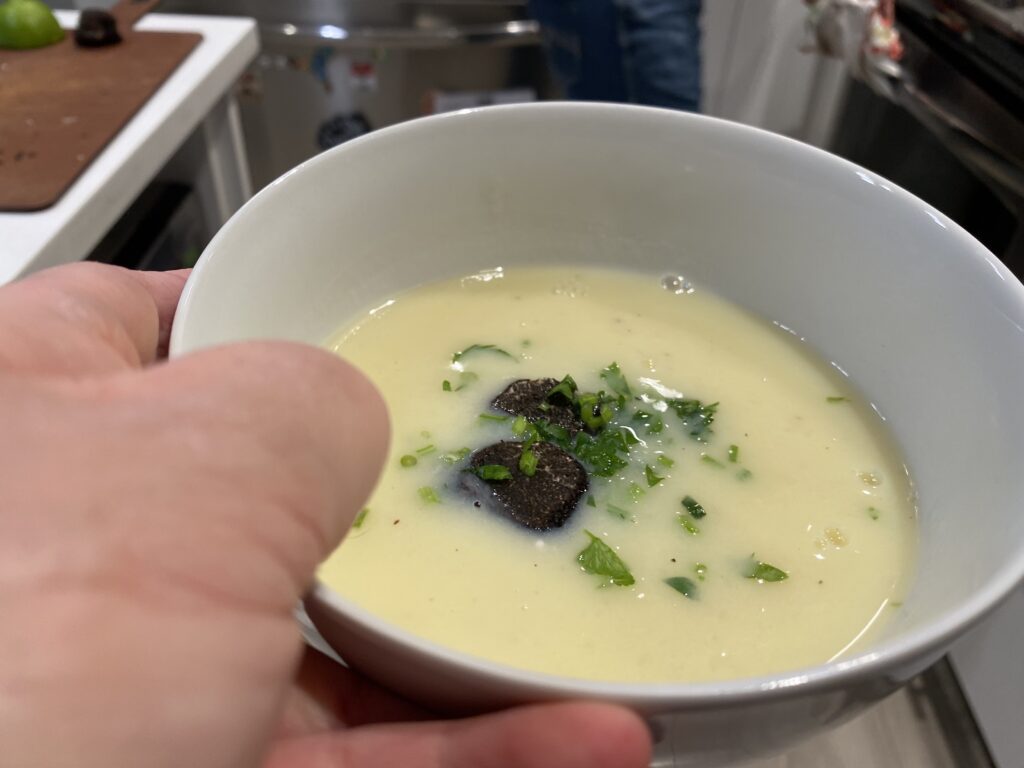
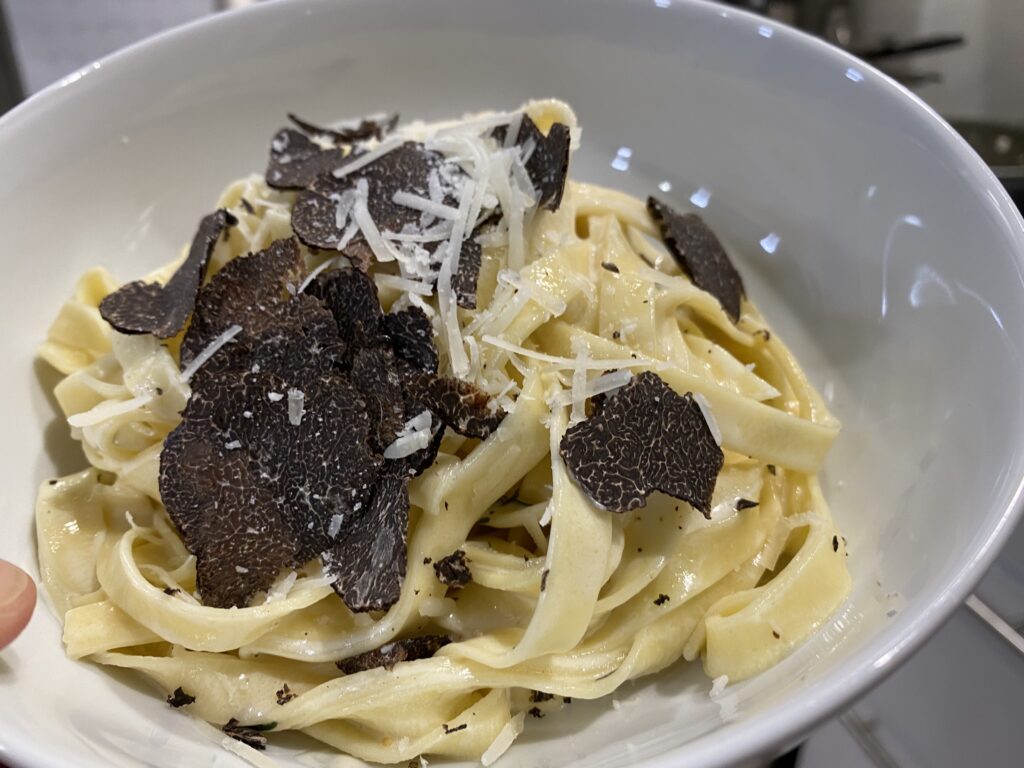
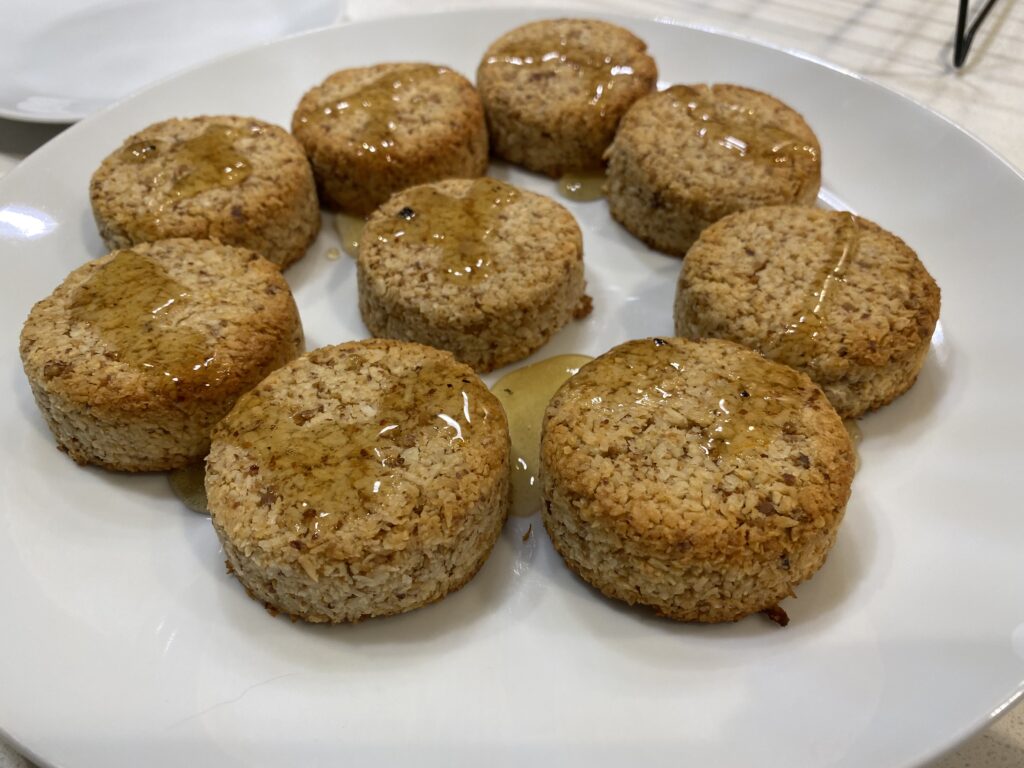
To be able to enjoy the dinner with my sister and her husband, we prepped a bunch of things beforehand. S bought all the ingredients on Friday, and our truffles also arrived fresh and on time the same day. When we moved the truffle from the delivery box to the fridge, the entire scent of this delicacy filled the kitchen.
I made the pasta dough the day before but then the eggs oxidized and it went grey, so that unfortunately went in the compost and we started fresh on Saturday morning.
Earlier Saturday I rolled the pasta while S baked the macaroons & crostini and made the soup.
Everything else was made fresh… I love that our island is the place where our guests can sit, eat appies and drink while still chatting and enjoying time together as S & I cook. Gotta say, I’m proud of us and we made a darn good team. And, most of all, I’m thrilled about this fun, yummy shared experience with my sis & B-I-L
